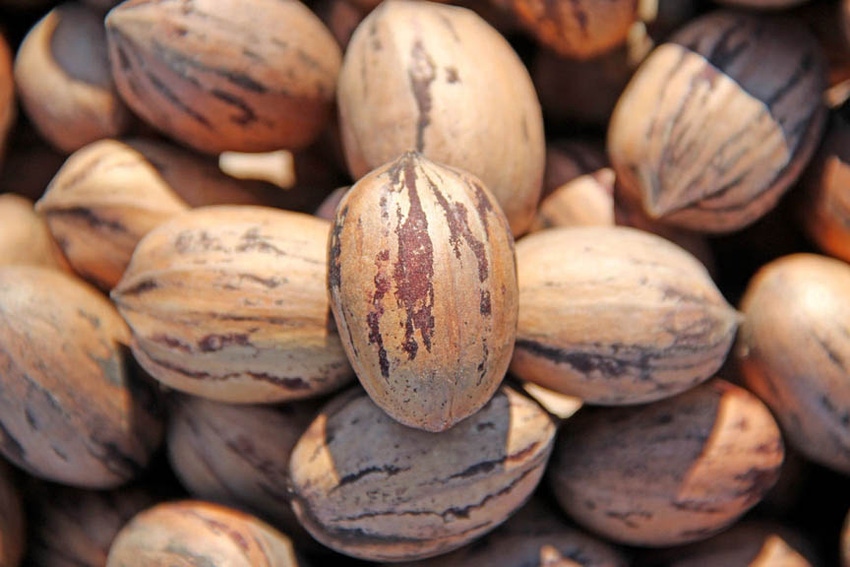
Despite a sizeable hit to the Georgia pecan crop by hurricanes, the 2017 U.S. pecan crop is expected to reach about 300 million in-shell pounds, compared to 270 million last year.
Philip Arnold, a New Mexico pecan grower and buyer plus a member of the American Pecan Council board, says even though Georgia pecan growers suffered major crop losses earlier this fall that increased production in western-growing regions are filling the gap.
USDA estimates about a 30 percent crop loss in southeastern pecan growing regions. Original estimates there were for a 110-120 million pound in-shell crop.
The University of Georgia Cooperative Extension reports that Hurricane Irma was the most damaging wind event in Georgia pecan history. Most of the damaged orchards are in the Valdosta area and near Ft. Valley where growers reported thousands of trees blown over and a significant percentage of nuts blown off the trees.
Most of the tree loss was to five-to-25-year-old trees. With full canopies, heavy crops, and saturated soils, the trees toppled in the wind, Arnold says. The remaining trees have a decent crop, but there could be meat quality issues due to a lack of nutrition late in the growing season due to wind-caused stem damage.
In the West, pecan production is on the upswing. Arnold says growers in New Mexico, West Texas and Arizona should harvest solid crops in late November. An estimate for the New Mexico crop is about 80 million pounds, a record-setting crop due to new plantings in the last 15 years.
Competition in the marketplace from Mexico will be reduced as growers there expect about a 30 percent drop in production. Last year, for the first time in history, Mexico’s pecan production equaled U.S. production, Arnold said.
Prices for U.S. pecans are not expected to top 2016 record prices. Due to those high prices, Arnold said consumption fell and the market softened slightly.
New Mexico, West Texas, and Arizona pecan-growing areas had a good monsoon season with timely rains which helped the nuts mature. The Mesilla Valley area in southern New Mexico has one of the largest pecan production areas in the West. Arnold said those growers began seeing nuts stripe and open up in October, a sign of early maturity and a good quality crop.
Arizona’s pecan harvest was underway as the Pawnee variety came off starting in early November.
Bruce Caris of Green Valley Pecan in Arizona said prospects for this year’s harvest are good as growers expect a 28-30 million pound crop. This could place Arizona fourth in the nation in pecan production, following Georgia, New Mexico, and Texas. Crop sizes are expected to increase every year, Caris added, due to the large number of new plantings.
The growing season was also good for Arizona growers, Caris said, with low pest pressure and warm fall temperatures. Arizona’s main pecan varieties include Western Schley and Wichita which will be harvested in late November.
In California, some growers began harvest in November, yet most will begin in December, according to Mark Hendrixson, an Orange Cove area grower and president of the California Pecan Growers Association.
Hendrixson said the California crop is estimated at around five million pounds - about an average size crop. California pecan acreage is not increasing at the growth rate in Arizona, he said, though acreage has increased.
After last year’s good price returns to pecan growers, Hendrixson does not expect similar prices this year, and like Arnold he says a softer price market is possible.
In southeastern U.S. pecan growing regions, the “green harvest” is underway for in-shell nuts destined for export. Growers are expected to shake trees twice to harvest nuts, Arnold explained, and will then dry. The extra handling can pay result in higher export prices.
About the Author(s)
You May Also Like




